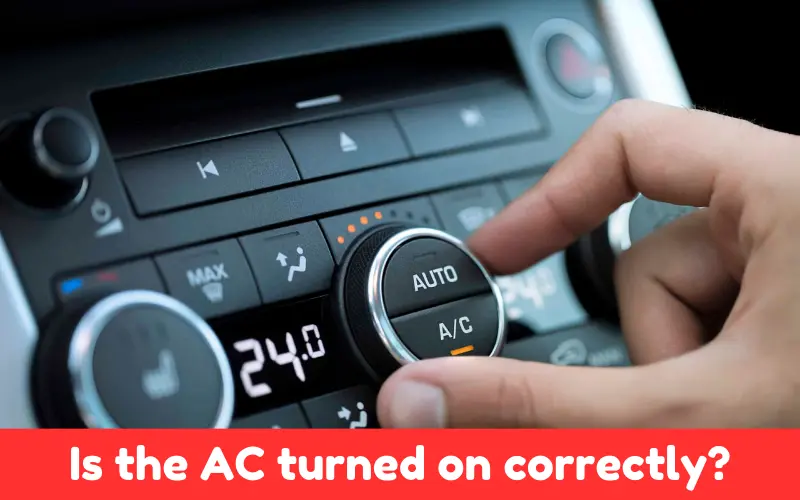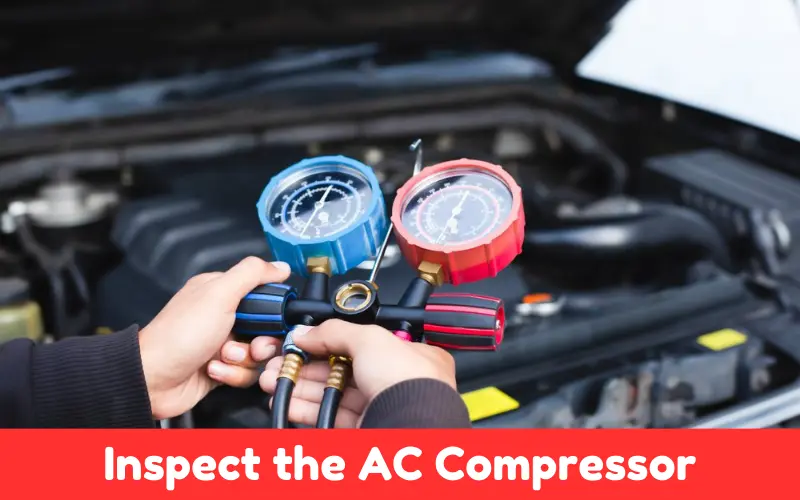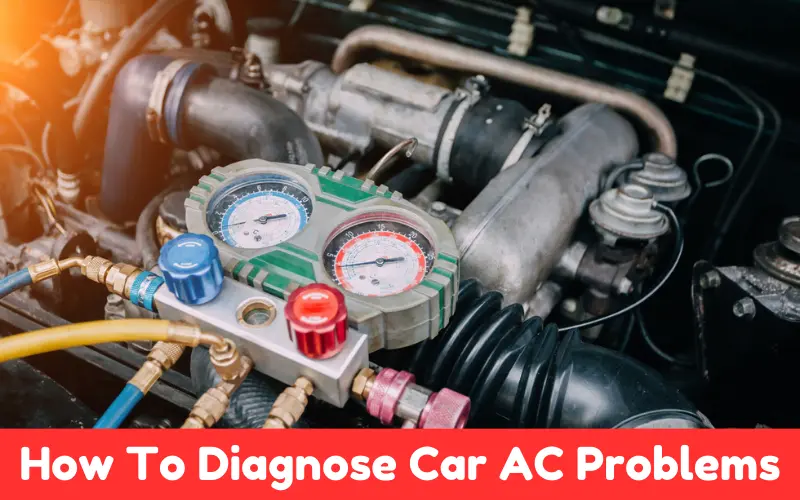When the mercury rises in summer, nothing beats the value of your car’s air conditioning (AC) system. You enjoy the cool air flowing in the cabin, which helps you get the most out of your travel experience.
But what happens when the cool air is absent or your AC system isn’t working as it should? As a result, preparing yourself for a thorough examination of common AC issues could save you the task of visiting Lipscomb Auto Center.
So, how to diagnose car AC problems? This blog aims to help you diagnose car AC problems and realize the value of resolving these issues at home before they require professional intervention.
Article Summary
Understanding How Your Car’s AC System Works
Before blindly diagnosing problems just because your car’s AC isn’t working, having at least a general understanding of how the system is structured and functions may be helpful. The system contains these primary parts:
- Compressor: Compresses refrigerant gas, increasing its pressure and temperature.
- Condenser: Cools the high pressure refrigerant gas, turning it into a liquid.
- Evaporator: Converts the liquid refrigerant into a gas, absorbing the cabin’s heat to make it cool.
- Expansion Valve: Regulates the flow of refrigerant into the evaporator.
- Blower Motor: Moves air across the evaporator, cooling it before releasing it into the cabin.
How To Diagnose Car AC Problems
With this system understanding, we can go over the common car AC issues and how to diagnose them.
1. Check for Simple Issues First
Before getting into more technical diagnostics, check for simple and easily fixable problems.
Is the AC turned on correctly?
Do I seriously have to say it? Double check that the AC is turned on. Ensure the AC button and temperature controls are in the right positions.

Any ‘eco’ modes your car might have could be attempting to save fuel at the expense of AC performance, so shut that off if a cooler cabin is your goal.
Inspect the AC air filter
The air filter could be clogged, preventing adequate air flow as if you had a failing AC. Check your owner’s manual on how to locate and view the air filter.
Replace the filter with a new one if it is dirty to see if that resolves the problem.
2. Inspect the AC System Components
If the easy methods do not help, it’s time to look at vital parts of your AC system.
Check the Refrigerant Levels
Couple that with low refrigerant, which is why a barely working AC is called a low on freon call, and you have an underperforming AC. Low refrigerant can be caused when refrigerant simply leaks out of the system.
- How To Check: Note that refrigerant pressure gauges are included in most cars nowadays, so one needs only check under the hood for a port that reads ‘refrigerant pressure gauge.’ If applicable, use an AC pressure gauge (available at your auto parts store) to determine your refrigerant pressure readings. A low reading will probably mean you have an AC refrigerant leak on your hands.
- Symptoms of low refrigerant: You will experience that the air isn’t as cold, or the AC will blow out hot air. Also, will the compressor not engage from low refrigerant pressure?
Look for Refrigerant Leaks
If your car is low on refrigerant, somewhere in the system, there’s a leak.
- How To Check for Leaks: When the refrigerating unit is cold, use a UV dye and UV light to look in the AC lines, hoses, and connections for evidence of leaks (in some refrigerant refill kits, the formula includes a fluorescent dye to assist in detecting leaks with the same UV light).
- Common Areas for Leaks: Look at the compressor seal area and all hoses and connectors for tell-tale leaks. Oily brown spots can indicate leaks from the refrigerant.
Inspect the AC Compressor
So if your compressor isn’t working, your system won’t blow the air nearly cold enough.

- How To Check: Switch the engine and AC fan on at full power, and listen for the compressor to click on. The compressor clutch should engage, making a clicking noise. If not, the compressor may be at fault.
- Symptoms of a Bad Compressor: AC blows warm air, the compressor clutch doesn’t engage, and you might hear rattles or grinding of the compressor.
Examine the Condenser
The purpose of the condenser unit is to cool the refrigerant gas so that it is ready for the expansion valve unit after it has passed through the condenser. A faulty or blocked condenser unit may prevent the AC from cooling adequately.
- How To Check: The condenser is usually placed before the radiator. Look for any visible damage, debris, or dirt that might block airflow through the radiator. Clear away any debris, leaves, or dirt obstructing airflow.
- Symptoms of a Faulty Condenser: The aircon is blowing hot air or getting warmer than usual. There’s frost on the indoor coil of the room air conditioner. Refrigerant is leaking from the outdoor unit.
3. Test the Electrical Components
If the mechanics are okay with it, it might be the electric.
Check the Fuses
Blown fuses can cut power to the AC system, causing it to stop working.
- How To Check: The AC fuse is in your car’s box. (Your owner’s manual should indicate the exact location.) First, remove any fuse visibly burning or damaged (replacements are inexpensive and available at any auto parts store).
Inspect the Relays and Switches
If any AC relays haven’t worked properly, power won’t flow to the compressor and the blower motor, preventing the AC from working.

- How To Check: Swap the AC relay with another one using the same terminology in the fuse box. Check if the issue persists. If the AC comes on after swapping, your AC relay is faulty.
Test the Blower Motor
If the air is not coming out of the vents, possibly a blower motor is broken.
- How To Check: If the AC is turned up and you hear nothing or only a weak airflow, you may have a blown blower motor. Listen for the blower motor and check the resistor, which controls the fan speed.
4. Consider Professional Help
You might want to visit your local auto mechanic if you’ve run through the items above and still haven’t pinpointed the issue.
Some ailments, such as issues with the compressor, internal electrical woes, and other difficult issues, require specialized equipment and know how to diagnose and repair.
Common Car AC Problems and Their Symptoms
Here’s a quick rundown of some common AC issues and their associated symptoms:
- Weak or Warm Air: Low refrigerant, clogged condenser, faltering compressor.
- Unusual Noises: Grinding or rattling sounds may suggest a bad compressor or blower motor.
- Musty Smell: Normally, the result of fungus, mold or mildew growth in the AC evaporator. This will happen when moisture gets trapped in the evaporator.
- No Airflow: Possibly a faulty blower motor or an electrical problem such as a blown fuse or relay.
FAQs on How To Diagnose Car AC Problems
Why is My Car’s AC Blowing Warm Air Instead of Cold?
The warm air coming from the AC could result from many different things (such as low refrigerant levels, a bad compressor, a dirty condenser, or a leak), and checking these components out will help you narrow it down.
How Can I Tell If My Car’s AC Has a Refrigerant Leak?
A couple of cold mornings or running the AC on ‘max’ for half an hour to prepare for a hot drive is usually enough to cycle out a few bad eggs or regurgitated bird skeletons. A leak is typically identified by warm air blowing out of the vents, low refrigerant levels in the sight glass in the lower receiver, drip or accumulation of refrigerant inside the storage tank compartment, or oil on hoses or connections around the AC system. Running a charge of UV dye and a UV light over the components will reveal a small leakage in the system.
Why Does My Car AC Make Strange Noises?
An ominous grinding, rattling, or clicking could mean a faulty AC compressor, a loose part, or a blower motor issue check it out immediately before it causes further harm.
What Should I Do If No Air Comes from the Vents?
If the problem is a blown fuse or a faulty blower motor, no air will come from the vents. On the other hand, if the blower motor resistor on the dash has failed, the blower motor will not spin. First, check the fuses and relays, but the blower probably needs to be replaced if there are no blown fuses or broken wires.
Final Thoughts
With a little patience and some time, you might be able to diagnose a problem with car AC all by yourself. First, check basic things, such as the car AC filter and fluids for houses, and then inspect components.
Usually, you will be able to diagnose the problem yourself, it will work out, and you won’t have to overpay for a visit to a garage.
In other words, it will save you money. But if you find yourself in a situation where you can’t diagnose the problem, or it’s quite complicated, it’s better to find a good local mechanic to get it diagnosed.
If you follow the steps above, you’ll have diagnosed whatever is wrong with your car’s AC and fixed it so that it soon blows cool, refreshing air again!

